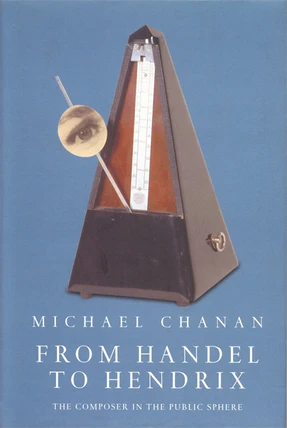
From Handel to Hendrix:The Composer in the Public Sphere
This study examines the composer as a public figure, it examines the fate of the composer through successive incarnations and investigates a range of themes such as subjectivity and identity.
In this book, a continuation of Michael Chanan’s investigation of the relation between music and society, the author examines the composer in the light of Jurgen Habermas’s study of the public sphere. Taking his cue from the German philosopher’s remarks about the bourgeois concert audience, the emergence of criticism and the development of autonomous music, Chanan examines the fate of the composer through successive incarnations, from Handel, Bach and Mozart in the eighteenth century by way of Beethoven, Liszt, Wagner, Mahler and Debussy in the nineteenth, to Schoenberg, Stravinsky, Bartok, Gershwin, Weill, Ellington, Cage and Boulez in the twentieth.
Drawing upon recent work in feminist and gay musicology, the book ranges over themes such as subjectivity and identity in Schubert and Chopin, the ascendancy of the Romantic personality, the lure of the exotic in Milhaud’s work, and the political economy of music.
A detailed history of the idea of the composer as a public figure, Chanan’s book charts both the dramatic change in the listening audience and, simultaneously, the composer’s progressive marginalization from the centre of musical life.
“It is undoubtedly true, as the music critic Hans Keller used to observe, that more people nowadays hear a single broadcast of a new work by an avant-garde composer than would have heard all Beethoven’s symphonies in his own lifetime. But the effects are not only quantitative; they also include radical alterations in the relationship between the audience and the object of aesthetic consumption, which seriously affect the situation of the composer, whose audience may now be wider and larger, but also becomes ever more fragmented and anonymous.”
